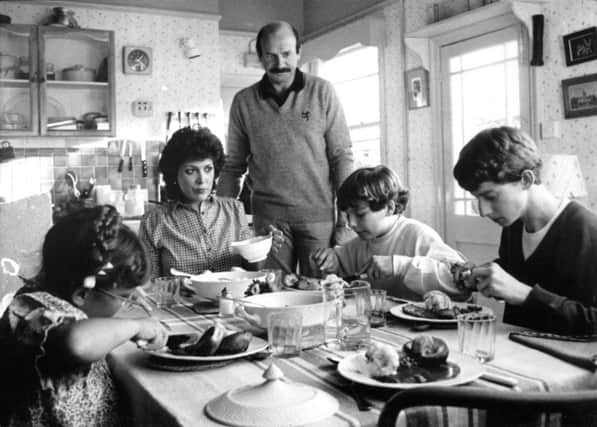Saucers go flying as digital life signals death of the dining table


Not only do most families now eat dinner in front of a screen in the lounge, a fifth no longer own a dinner table at all, research reveals today.
The shift to casual eating has also hastened the demise of rackfuls of crockery items which no homemaker would once have been without.
Advertisement
Hide AdAdvertisement
Hide AdCups with saucers, teapots and napkin rings have all gone the way of the mangle as modern families migrate from formal dining to snacking and grazing at what analysts are calling the “digital dinner table”.
Just 24 minutes is spent preparing the average meal and 21 minutes eating it, the research for Co-op Food found.
More than half of families do not eat dinner together every night, but when they do, a third use the sofa and 20 per cent eat in the kitchen. Fewer than one in five eat at a dining table and barely one in 50 regularly prepares a three-course meal.
In homes that still have a dinner table, its use is restricted to special occasions, with the ability to lay out a place setting correctly threatening to become a lost art, the survey found.
Advertisement
Hide AdAdvertisement
Hide AdThe figures also shed new light on the flight from traditional dinner etiquette, particularly among younger householders. Less than a third of 25-34 year-olds own cups and saucers, although eight in ten over-55s still use them. And napkin rings are to be found in only 19 per cent of homes.
Dr Patrick Alexander, of the non-profit Social Issues Research Centre, said portable technology was among the factors driving a wedge between family members.
“What ‘eating together’ means is changing. Screen time during mealtimes is now common for the vast majority of families,” he said.
But he added that while the digital lifestyle adopted by many families closed down traditional methods of discourse, it also presented “new opportunities to interact over food”.
Advertisement
Hide AdAdvertisement
Hide AdThe survey found that more than half of families have a television, computer or handheld screen present when eating together.
Dr Alexander said: “Families continue to recognise the social importance of sharing food. They do want to spend more quality time together through the sharing of food, and it’s the competing schedules of children and parents that normally get in the way.”
The findings are a far cry from the image of the family meal enshrined in commercials like those for Oxo cubes, which were on screen as recently as 18 years ago. But even they changed to reflect the changing nature of the nuclear family over the decades – the first ones, in 1958 seeing the fictitious Katie and Philip sitting down in the dining room and the 1980s versions, which starred the late Lynda Bellingham, shifting the action to the kitchen.
However, while the niceties of formal dining may have been consigned to the sideboard, Dr Alexander said they may not be entirely lost to the ages.
Advertisement
Hide AdAdvertisement
Hide Ad“It may be that future generations see this knowledge in a different way,” he said.
Rather than being part of the everyday practice of eating together, the traditional skills of arranging place settings and knowing the correct use of cutlery may become a kind of sacred or ritual knowledge, more likely used for special family occasions than for meals in on an average Monday evening.”
He said the research pointed to the use of dining tables as “ceremonial spaces where important meals are consumed”.